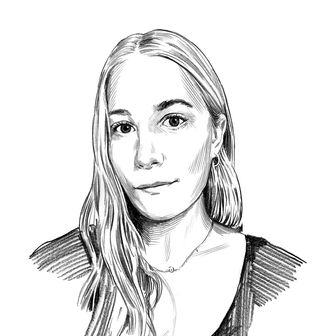
By now you’ve probably heard about The Education of Brett Kavanaugh, the book out today by New York Times reporters Robin Pogrebin and Kate Kelly, which provides a deeper look into Kavanaugh’s life, as well as his Supreme Court confirmation. Two of the women who accused him of misconduct ahead of his hearing, Christine Blasey Ford and Deborah Ramirez, are also interviewed about their experiences with the Supreme Court justice.
But you might have heard about it only in the context of a highly controversial excerpt published in the New York Times “Sunday Review,” the fallout from which has threatened to eclipse the news-making, revelatory information contained in the actual book: namely, that there had been yet another allegation of sexual misconduct leveled at Kavanaugh regarding his time at Yale reported to the Judiciary Committee, the circumstances of which seemed to back up Ramirez’s account. And it was not investigated by the FBI.
In The Education of Brett Kavanaugh, a copy of which was obtained by the Cut before it was published today, Pogrebin and Kelly report that “the offices of at least two senators on the Judiciary Committee,” in the run-up to Kavanaugh’s impending confirmation hearings at the end of last September, “learned that one of Kavanaugh’s classmates, Max Stier, had seen a drunk Kavanaugh with his pants down at another freshman-year party where his friends brought Ramirez’s drunk friend Tracy Harmon over and put Kavanaugh’s penis in her hand.” And they write that “at least one other Yale student remembered hearing that Harmon had transferred out of Stiles residential college at Yale because of Kavanaugh, though exactly why is unclear.”
In the book, the reporters note that “Harmon, whose surname is now Harmon Joyce, has also refused to discuss the incident, though several of her friends said she does not recall it.” This is the piece of information that was somehow missing from the Times excerpt and that caused a conflagration among media outlets and pundits on both sides of the aisle. People like Sean Hannity saw the omission of the fact that Harmon Joyce does not herself accuse Kavanaugh of the offensive behavior as a sign of a partisan smear — especially because Stier, the man who says he witnessed it, was a member of Bill Clinton’s legal team during the Monica Lewinsky scandal in 1998. Victim advocates and liberals critical of Kavanaugh’s appointment were upset that it furnished such ammunition to his backers.
Several things were strange about the Times excerpt in addition to the omission of Harmon Joyce’s refusal to comment, which has now been added in an editor’s note. Harmon Joyce wasn’t named in the excerpt, and the account was buried in a long story about Deborah Ramirez’s time at Yale called “Brett Kavanaugh Fit in With the Privileged Kids. She Did Not,” instead of as a piece of news in itself about an allegation not previously known to the public. (When asked about why the Times did not publish a separate news story, deputy editorial-page editor James Dao referred to an article that ran on the same day reporting on renewed calls for Kavanaugh’s impeachment based on the excerpt.)
Unfortunately, the controversy around the way the excerpt was packaged and edited has drawn attention away from what’s actually in The Education of Brett Kavanaugh, and not just the new allegation. Pogrebin and Kelly uncovered crucial information about the hurried (or nonexistent) FBI investigations into both Blasey Ford and Ramirez’s allegations before Kavanaugh was added for life to the Supreme Court. In a letter to the FBI before his confirmation, lawyers representing Ramirez and Ford outlined 13 potential witnesses for investigators to interview, including Stier. According to Pogrebin and Kelly, Stier and many others were never contacted and their accounts never investigated. That should be the news.


